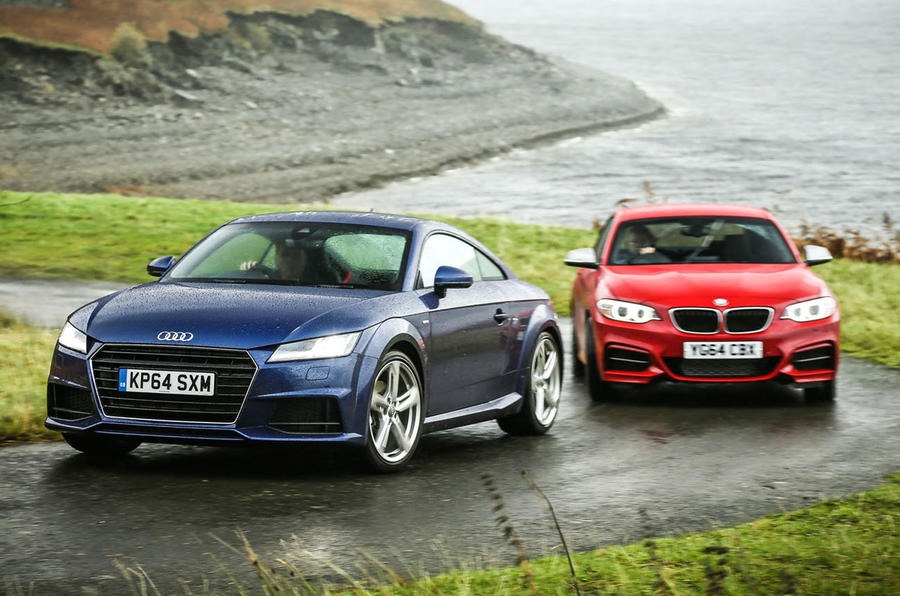So let’s get one thing clear about this comparison before we go a single yard further. The Audi TT that we are testing here is not, and never will be, a direct dynamic rival for the faster, more powerful and more expensive BMW M235i.
Anyone so much as considering a TT in place of an M235i would, surely, never go for the 227bhp, £31,635 version of the car you see here. Instead, they would much more likely opt for the new 306bhp TT S model that we drove and were so impressed by earlier this year, were they thinking about spending £34,250 on a 321bhp M235i.
But here’s the thing: the most potent S version of the TT won’t be available until the spring of next year at the earliest.
So given that the new TT is now upon us in the UK, with a slightly higher than expected price (the test car that you see above actually costs £36,150 including all of its various options) we sat back for a moment and wondered: why don’t we just shine a light into its eyes and see how good the new TT really is? Why not give it both barrels right from the word go, in other words, and find out how it gets on?
Our justification for such thinking went something like this: if the new TT can get anywhere close to the excellent M235i with a mere 227bhp and costing £2615 less, then it will be more than good enough to succeed no matter what kind of engine it is powered by, and not only commercially but also, this time round, dynamically, too. And if not, well, it will be business as usual for the new TT.
To put it another way, when push comes to shove, the engine output and price inequality shouldn’t matter that much, because if the latest TT can cut it where it counts, then there’s no risk of it being trounced by the M235i.
But if it can’t, then it will get hammered by the BMW, plain and simple. In which case the Audi’s reputation for being little more than a fashion statement on wheels will not have altered one little bit.
Before we come to any conclusions, however, we need to run through some of the technical details and do a bit more number crunching in order to clarify where both of our particular test cars are coming from.
The Audi is the all-new car, of course, and in this case it comes in S-line trim – which lowers the ride height by 10mm – and boasts 227bhp and a more fulsome 273lb ft from its familiar 2.0-litre turbocharged engine.
Thanks to more extensive use of aluminium this time round, it weighs a mere 1305kg, emits just 137g/km of CO2 and is capable of reaching 62mph from rest in 6.0sec dead.


































































































Add your comment
Fair not really..
So price etc is going to be different. The TT is a niche model sports car that has dominated over 50% of the market place since it was released in 1998.
The TT has unrivalled residual values in this segment. The ownership cost you would probably find would be less over a period of 3 years rather than looking at the initial cost difference.
The new TTs boasts better performance figures and fuel economy and more than likely better residual values that a M235i. I would of saved this review until you had the comparative vehicles.. and even then... BMW M range is comparable to the Audi RS range and with that still to come and to boast 360ps + yes ok 45k+ most likely.. but supercar performance for 50k...
POINTLESS TEST
Horrified